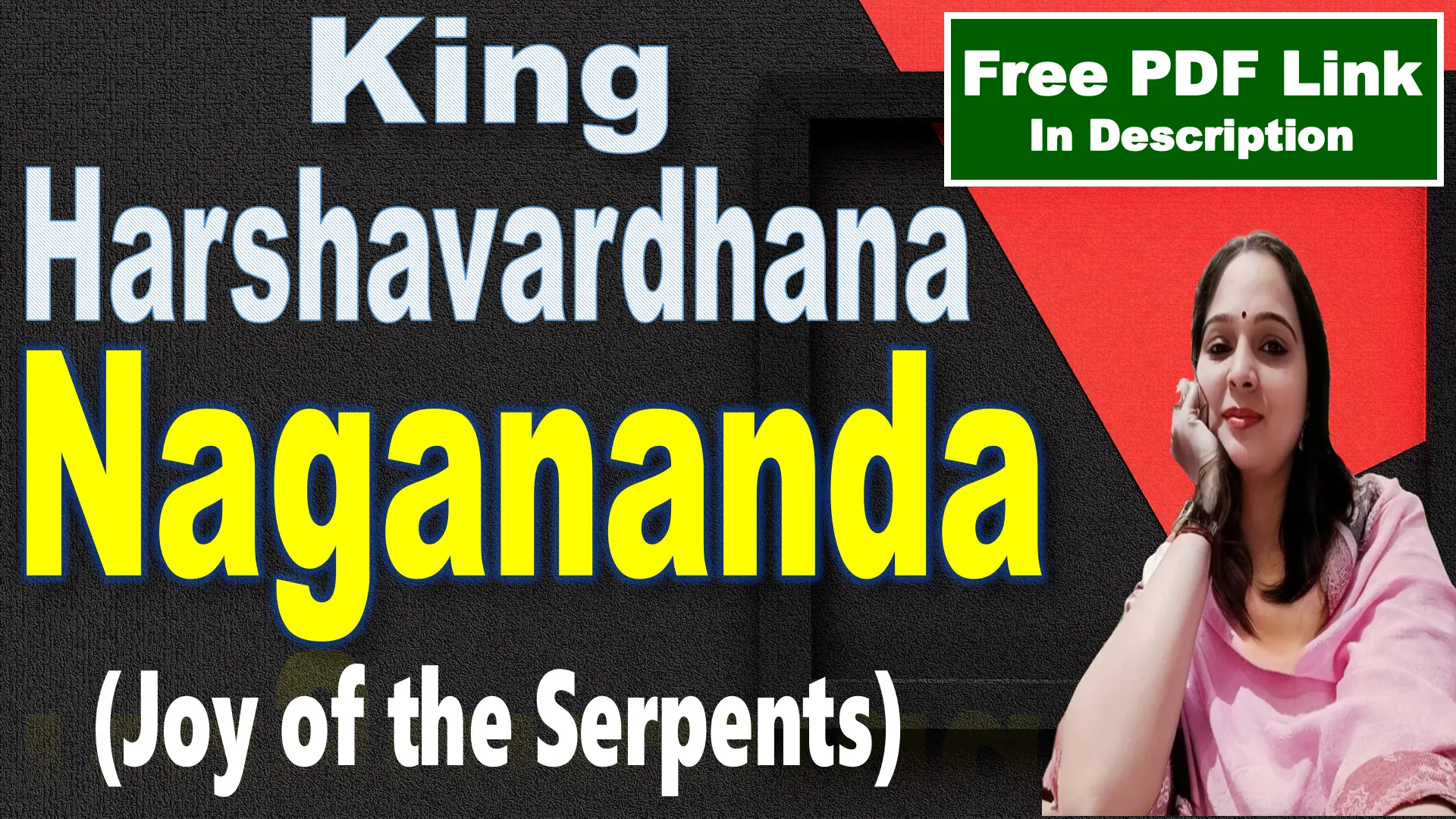
STYLE
The style of Naga-Mandala by Girish Karnad is a blend of realism, folklore, and magical realism, characterized by its innovative use of language, symbolism, and theatrical elements. Here’s an overview of the key aspects of its style:
Folkloric Elements and Magic: The play incorporates elements of Indian folklore, particularly the myth of shape-shifting cobras and the belief in the supernatural. The blending of reality and magic is central to the play’s style. The story’s mystical elements are presented in a way that feels both believable and surreal, often leaving the audience to question what is real and what is imagined.
Symbolism: The play uses various symbols to represent deeper themes. For example, the cobra symbolizes transformation, the mystical, and the unspoken aspects of Rani’s life. The hair of Rani is another significant symbol, representing her beauty, her connection to Naga, and the complexities of her relationships. The act of tying the cobra to her hair symbolizes the entanglement of her real and mystical worlds.
Use of Dialogue: Karnad uses poetic and simple language, which is both accessible and layered with meaning. The dialogue often reflects the inner turmoil of the characters, particularly Rani. The characters express their emotions subtly, with a mix of humor, despair, and longing, which enhances the play’s emotional depth.
Blending of Realism and Fantasy: The style of Naga-Mandala combines elements of everyday life with the fantastical. The real world of Rani’s marriage, loneliness, and struggles is intertwined with the magical occurrences involving the cobra and the flames. This fusion of reality and fantasy helps highlight the play’s themes of transformation, identity, and the complexities of relationships.
Theatricality and Stagecraft: The play’s structure and its use of theatrical conventions contribute to its unique style. The presence of the flames, for instance, is a metaphorical and theatrical device, as they represent the audience’s reactions and provide a commentary on the story. The transitions between the prologue, Rani’s life, and the mystical events are fluid and often marked by symbolic lighting and staging, creating a dreamlike atmosphere.
Narrative Structure: The play follows a non-linear structure, moving between the real and the magical worlds. The shift in perspectives, such as from the prologue with the Man to Rani’s life, adds a layer of complexity to the narrative. The storytelling style is reflective, with themes of fate, choices, and destiny explored through the lens of a mythological tale.
Historical Context
Naga-Mandala by Girish Karnad is rooted in India’s rich cultural, social, and literary history. Written in the late 20th century, the play reflects the influence of traditional Indian folklore, the socio-political landscape of the time, and Karnad’s own creative approach to storytelling.
Influence of Indian Oral Traditions
The play draws heavily from Indian oral traditions, specifically folklore from Karnataka. These tales, passed down through generations, often served as moral lessons or entertainment for rural communities.
Oral storytelling was a way to preserve culture and engage listeners through fantastical elements, such as magical creatures, talking animals, and supernatural interventions.
By adapting these oral tales into a dramatic form, Karnad preserves this cultural heritage while modernizing it for contemporary audiences.
Position of Women in Society
Naga-Mandala reflects the gender dynamics prevalent in Indian society during its time of writing and earlier. Women often faced patriarchal oppression, were expected to conform to traditional roles, and had limited personal freedom.
Rani’s character embodies these struggles as she is confined, silenced, and accused unjustly, reflecting the larger issues faced by women in Indian households.
During the 20th century, feminist movements in India were gaining momentum, challenging these traditional norms. Karnad’s play indirectly aligns with these movements by portraying Rani’s eventual empowerment.
Caste and Social Hierarchies
The play also touches upon caste and social roles, seen in Kurudawa’s concern about societal norms and Appanna’s use of an “untouchable” to bury the dead dog. These details reflect the deeply ingrained caste practices in rural India.
Karnad uses these subtle references to critique the rigid social structures that often-marginalized individuals based on caste or class.
Post-Independence Cultural Renaissance
Written in 1987–88, Naga-Mandala came during a time when Indian theater and literature were undergoing a cultural revival. Playwrights like Karnad, Vijay Tendulkar, and Badal Sircar were redefining Indian drama by blending traditional themes with modern concerns.
The play reflects a post-independence India grappling with its identity, where ancient traditions coexisted with modern values. Karnad’s use of folklore represents an effort to bridge the gap between past and present.
Feminism and Modernization
The 20th century saw the emergence of feminist thought in Indian literature. Authors and playwrights began exploring women’s roles in marriage, society, and personal identity.
Karnad’s Naga-Mandala aligns with this discourse, presenting Rani as a victim of patriarchy but also as a symbol of resilience and transformation.
The play critiques male-dominated power structures through Appanna’s neglect and domination while celebrating Rani’s eventual empowerment through her purity and endurance.
Karnad’s Personal Influence
Girish Karnad was deeply influenced by his exposure to both Indian and Western literature. While Indian folklore forms the backbone of Naga-Mandala, Karnad’s experiences as a modern playwright allowed him to infuse psychological depth and thematic complexity into the narrative.
His time as a Fulbright Scholar at the University of Chicago also influenced his understanding of modern storytelling techniques, which he seamlessly merged with Indian traditions.
Critical Overview
Introduction
Girish Karnad’s Naga-Mandala is a celebrated play written in 1987-88 that draws inspiration from Karnataka’s oral folklore. The play merges myth, magic, and societal critique to create a narrative that resonates deeply with universal human emotions. By exploring themes of love, betrayal, gender roles, and identity, Karnad weaves a complex yet relatable tale that has become a cornerstone of Indian literature and theater.
Plot Summary
The story follows Rani, a young woman trapped in a loveless marriage with her controlling husband, Appanna. Locked in the house daily, Rani’s loneliness is alleviated by a magical root given to her by Kurudawa, an old family friend. This root inadvertently attracts a King Cobra, who transforms into Appanna’s form at night and treats Rani with kindness and love. Rani, unaware of this duality, begins to find solace in her nightly visitor.
The situation escalates when Rani becomes pregnant, and Appanna, who never shares her bed, accuses her of infidelity. A trial ensues, and Rani swears her innocence by undergoing a snake ordeal. She pulls out the King Cobra from an anthill and takes an oath. Instead of harming her, the cobra protects her, astonishing the villagers, who declare her a goddess. Appanna repents, and Rani forgives him, marking a turning point in their relationship.
In a poignant finale, the cobra sacrifices itself to remain close to Rani, blending themes of love, sacrifice, and transformation. The story ends with Rani embracing a new life, balancing her roles as a wife, mother, and divine figure.
Themes
Gender and Patriarchy
Explores women’s struggles in a male-dominated society through Rani’s oppression and isolation.
Highlights the disparity in how men like Appanna (cold and controlling) and Naga (loving and caring) treat women.
Love and Betrayal
Contrasts Naga’s pure love with Appanna’s betrayal.
Emphasizes the emotional complexity of relationships and the healing power of genuine love.
Fantasy and Reality
Blends magical elements like Naga’s transformation with real struggles like Rani’s loneliness.
Shows how fantasy can reveal deeper truths about human emotions.
Power of Storytelling
Highlights storytelling as a way to preserve culture and human experiences.
Shows how stories can transform and give meaning to life.
Truth and Justice
Rani’s snake ordeal symbolizes the triumph of truth over false accusations.
Justice prevails, turning Rani into a symbol of divinity and purity.
Characters
Rani
Rani symbolizes resilience, purity, and transformation. From a helpless victim, she evolves into a figure of strength and reverence.
Appanna
A representation of patriarchal authority, Appanna starts as a cold and controlling husband but redeems himself through repentance and acknowledgment of his wrongdoings.
Naga
The King Cobra, embodying love and devotion, is central to the magical realism of the play. His ultimate sacrifice highlights his selfless affection for Rani.
Kurudawa
The blind old woman provides wisdom and initiates the events by giving Rani the magical root, symbolizing the intersection of tradition and mysticism.
Kappanna
Kurudawa’s son adds humor and subtle supernatural elements, making the narrative more dynamic.
Structure and Style
Naga-Mandala is a two-act play framed by a prologue. Karnad employs oral storytelling traditions, magical realism, and simple yet profound dialogues to engage the audience. The interplay of myth and reality, along with the integration of narrators like the Flames and the Man, blurs the boundaries between fiction and truth, creating a unique narrative structure.
Historical Context
The play reflects India’s cultural richness, drawing heavily from traditional storytelling while addressing contemporary social issues like women’s rights and marital dynamics. Written during a period of social change in post-independence India, Naga-Mandala critiques patriarchal systems while celebrating feminine strength and resilience. It resonates with feminist ideals emerging during the late 20th century.
Critical Reception
Naga-Mandala has received widespread acclaim for its innovative blend of folklore and modern themes. Critics praise Karnad’s ability to use magical realism to highlight societal issues, particularly the plight of women in patriarchal setups. The play’s open-ended narrative invites multiple interpretations, making it a subject of scholarly debate. However, its universal themes of love, identity, and justice have made it a timeless piece in Indian theater.
Conclusion
Naga-Mandala is a masterpiece that bridges the gap between ancient storytelling and modern social commentary. With its rich characters, layered themes, and symbolic use of magic, the play captures the complexities of human relationships and societal structures. Girish Karnad’s innovative approach makes it a compelling narrative that continues to resonate with audiences worldwide, blending the timeless essence of folklore with contemporary relevance.






Very nice explanation for Nagamandala.
Thank You SO Much Dear.